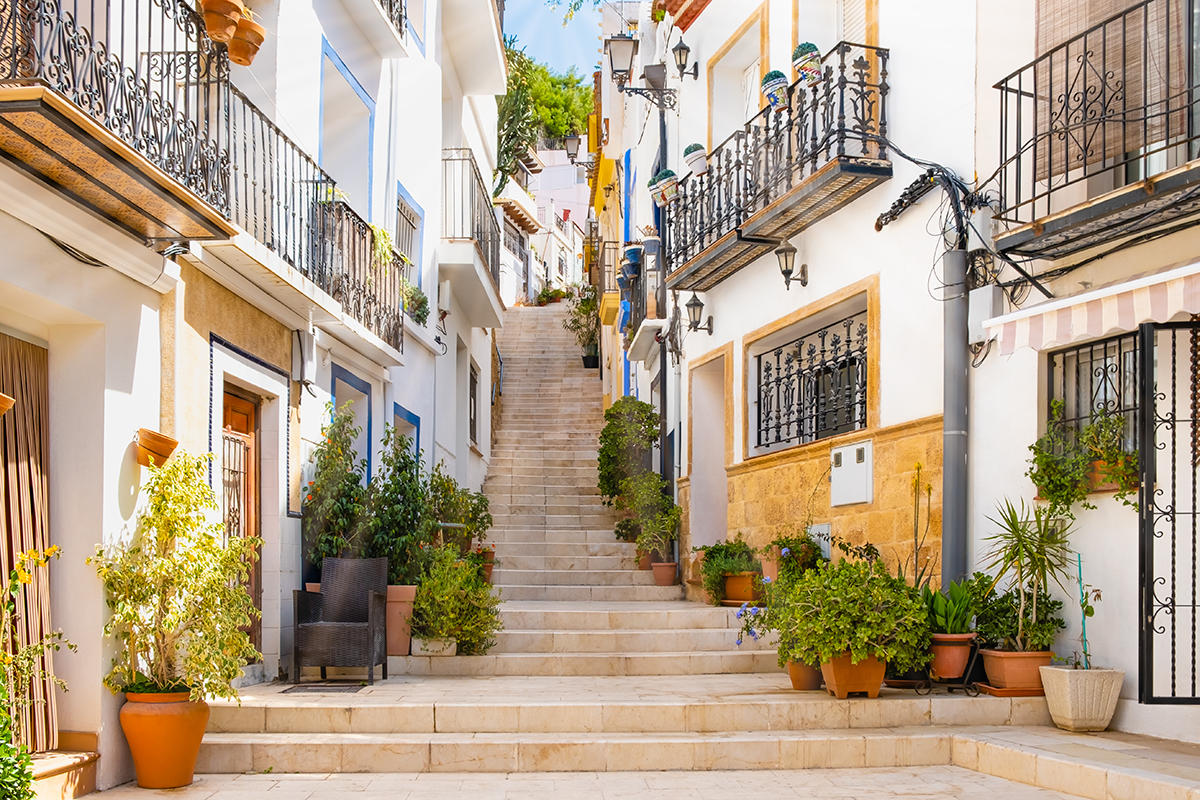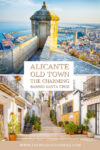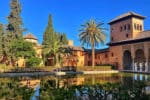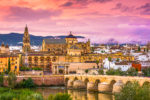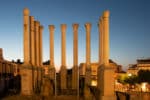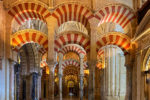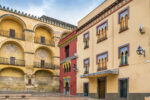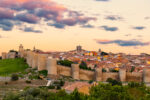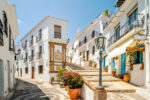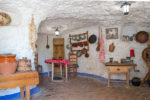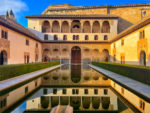Alicante Old Town is the neighbourhood (or barrio) of Santa Cruz, lying just below the Santa Barbara Castle to the north of La Rambla. It spills down the slope of Mount Benacantil, and its total area is quite large. But the most picturesque area is the main residential area on the highest point of the barrio.
This part of Alicante old town feels like a traditional Andalusian village inside the city of Alicante. It is a tranquil world of beautiful winding streets lined with whitewashed buildings decorated with colourful pot plants and brightly-painted doors and window frames. It has a certain Moorish air, too, like the streets of Cordoba or Granada.
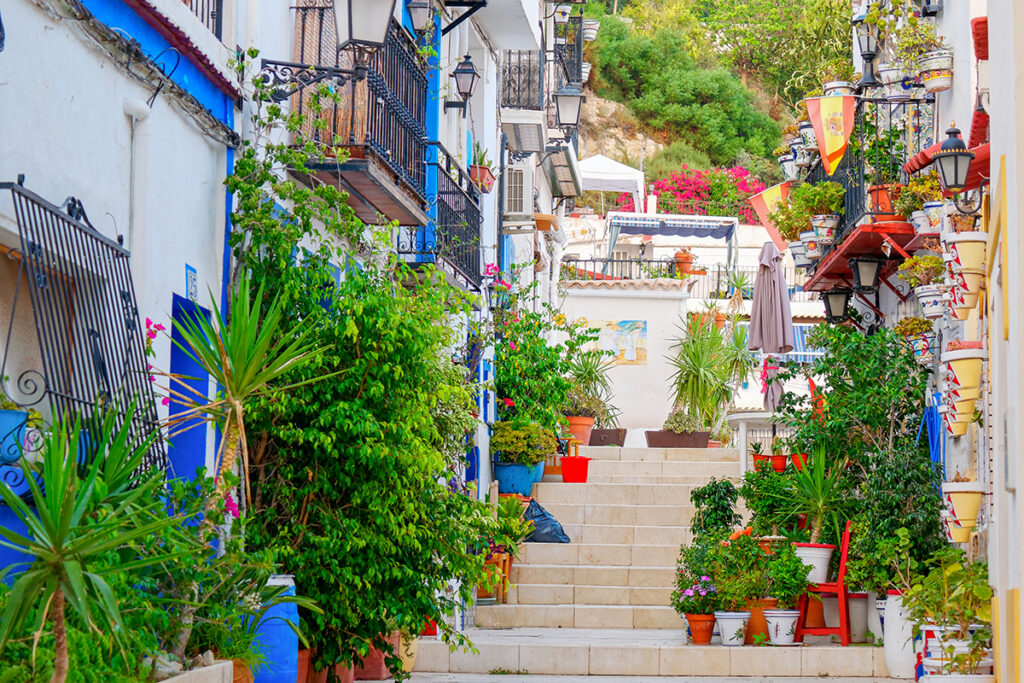
The residents of Barrio Santa Cruz are some of the friendliest people you’ll meet in Spain. You can safely let yourself get lost in the adorable streets of Santa Cruz and simply ask for directions when you need to.
One thing to keep in mind is that Barrio Santa Cruz lies on the side of a mountain – its streets are steep, and there are many stairs. If you are not a fan of uphill climbs, you can catch the elevator to Santa Barbara Castle, walk around to the other entrance, and walk down via Santa Cruz. But first thing’s first, let’s get oriented in Alicante Old Town
So, what is the Old Town in Alicante?
Alicante Old Town is quite a large area stretching from the coastline to the top of Mount Benacantil crowned by Santa Barbara Castle (Castillo de Santa Barbara). The most atmospheric part of Alicante’s Old Town is the neighbourhood of Santa Cruz
How far is the beach from Alicante Old Town?
Playa del Postiguet lies at the foot of Mount Benacantil. It is only a 4-minute walk to the beach from the Santa Barbara castle elevator on Calle de La Virgen del Socorro.
Where to Stay in Alicante Old Town
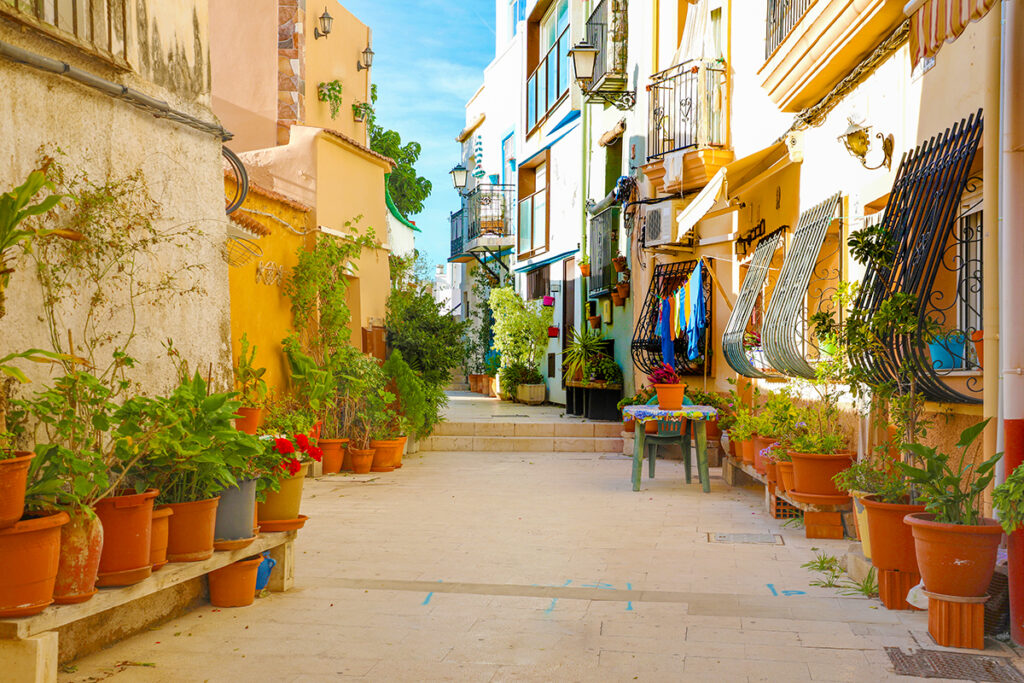
Barrio Santa Cruz is by far the most picturesque part of Alicante. It’s a lovely place to stay away from the hustle and bustle of touristic Alicante, and there are several charming apartments in this part of town.
The cozy, well-stocked one-bedroom Casa Anna on Calle Santa Lucia is one of the most popular options. The nearby Castle View one-bedroom apartment has a lovely private terrace with fabulous views of the city and the castle.
The absolutely gorgeous Casita Kunterbunt on Calle San Luis has unbeatable views of Santa Barbara Castle and the rooftops of Alicante old town.
What Not to Miss in Alicante Old Town
The top part of Barrio Santa Cruz lies between the Plaza del Carmen and Ermita de Santa Cruz – an 18th-century chapel at the highest point of the neighbourhood. Not surprisingly, the views from the chapel, and other viewpoints in this part of town, are spectacular.
Calle San Rafael
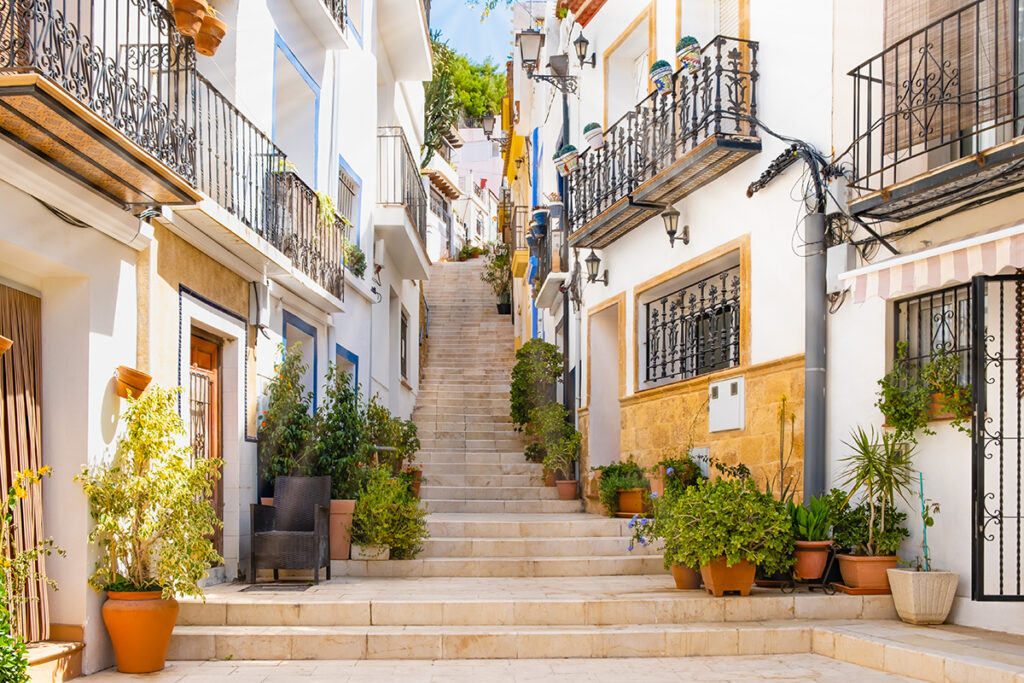
Calle San Rafael is the iconic image of Alicante old town: cute-as-a-button whitewashed houses with colourful doors, windows and potted plants, and plenty of stairs.
It is the most visited and the most photographed street in Santa Cruz. It is also one of the easiest streets to find – it starts at Plaza del Carmen and runs all the way to Ereta Park.
Calle San Antonio
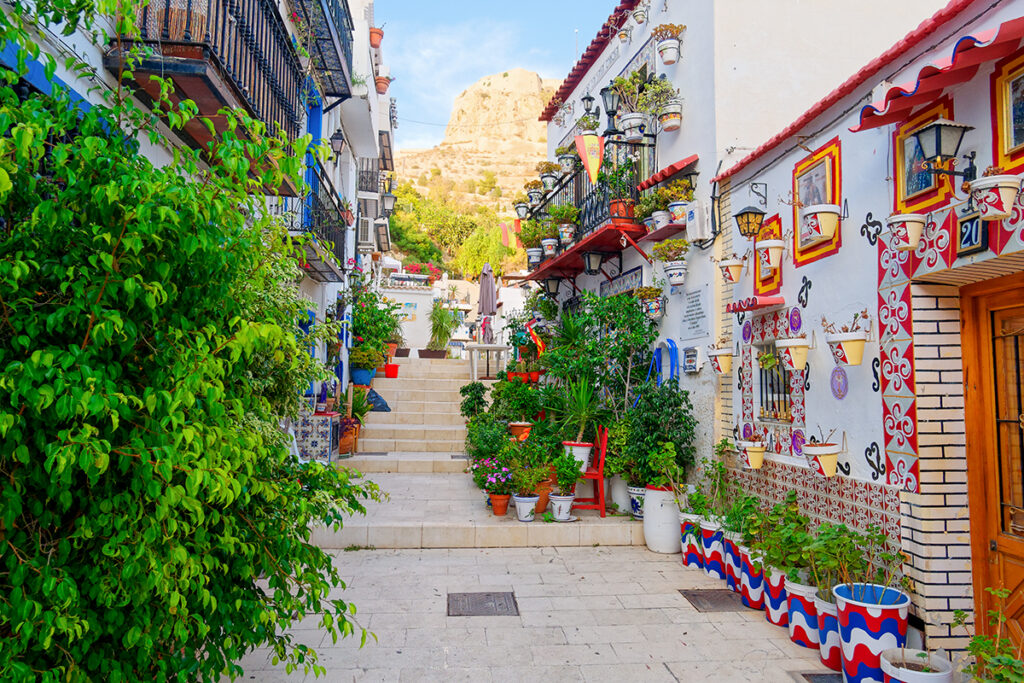
An equally picturesque street is Calle San Antonio – the same adorable houses, the same picturesque stairs.
Calle San Antonio runs between Calle San Rafael and Calle de Trafalgar. Near the Trafalgar Street end, there is a lookout – Mirador de La Santa Cruz that has fantastic views of the city below.
There are blue signs pointing towards Emirita de Santa Cruz from the start of Calle San Antonio, so you can easily venture down the side alleys without losing your orientation.
Ermita de Santa Cruz
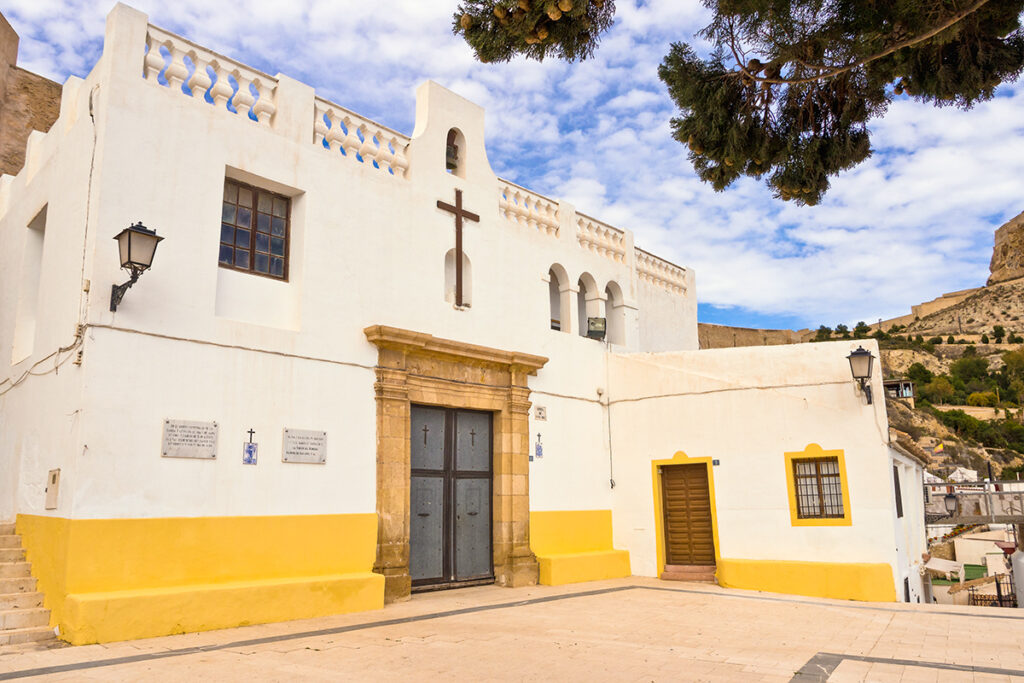
Ermita de Santa Cruz is a picturesque 18th-century chapel built against the medieval city wall and the Ampolla tower, one of the few remnants of Alicante city walls.
The chapel is particularly popular during the Semana Santa (Holy Week), but for most of the year, it’s a quiet place with fabulous views.
Sitting on top of the hill, the church has panoramic views of Alicante all the way to the ocean below. There is a designated lookout, Mirador de la Santa Cruz, next to the church that completes the 180-degree panorama.
In summer, the chapel often hosts classical music concerts.
Tip: If you are using Google Maps to navigate, Santa Cruz chapel is named Ermita de la Santa Creu on the maps.
Park de La Ereta
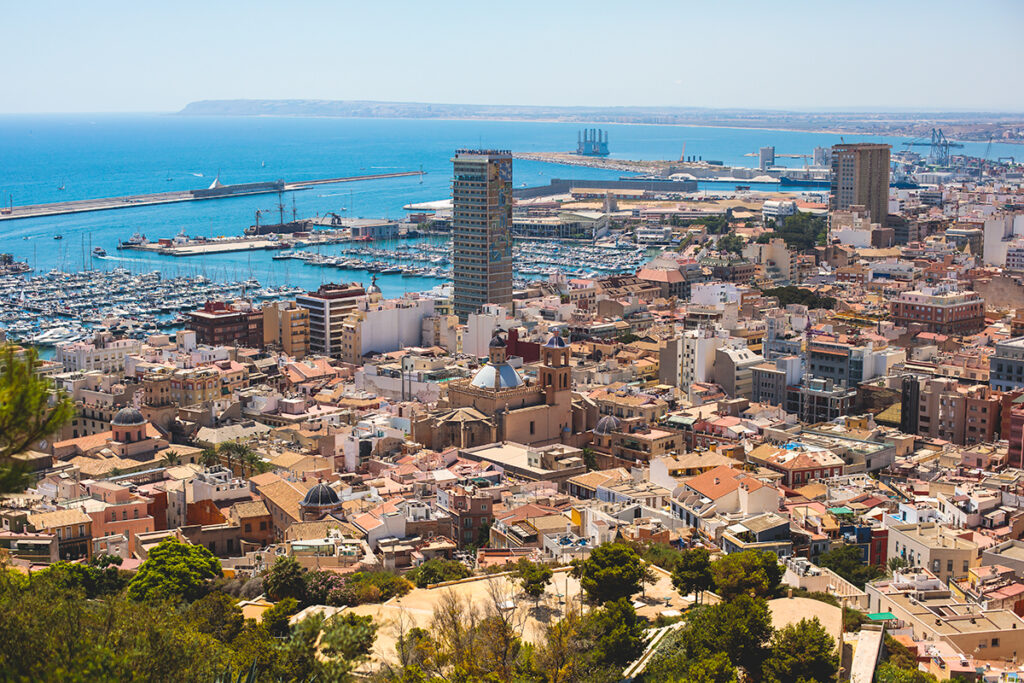
Situated at the foot of Mount Benacantil, between Barrio Santa Cruz and Santa Barbara Castle, Ereta park is a green sanctuary in the city without much shade.
The park is quite large and has a few fantastic viewpoints over the city and the Mediterranean Sea. There is even a fine dining restaurant – La Ereta. But the best way to explore the park is to follow the winding paths to the remnants of Alicante city walls and a few other points of interest.
As you climb higher towards the castle, you’ll leave the urban sprawl behind and pass through olive and pine trees and then venture into the typical Mediterranean scrub dotted with oak trees. And before you know it, you’ll find yourself in front of Santa Barbara Castle.
Santa Barbara Castle
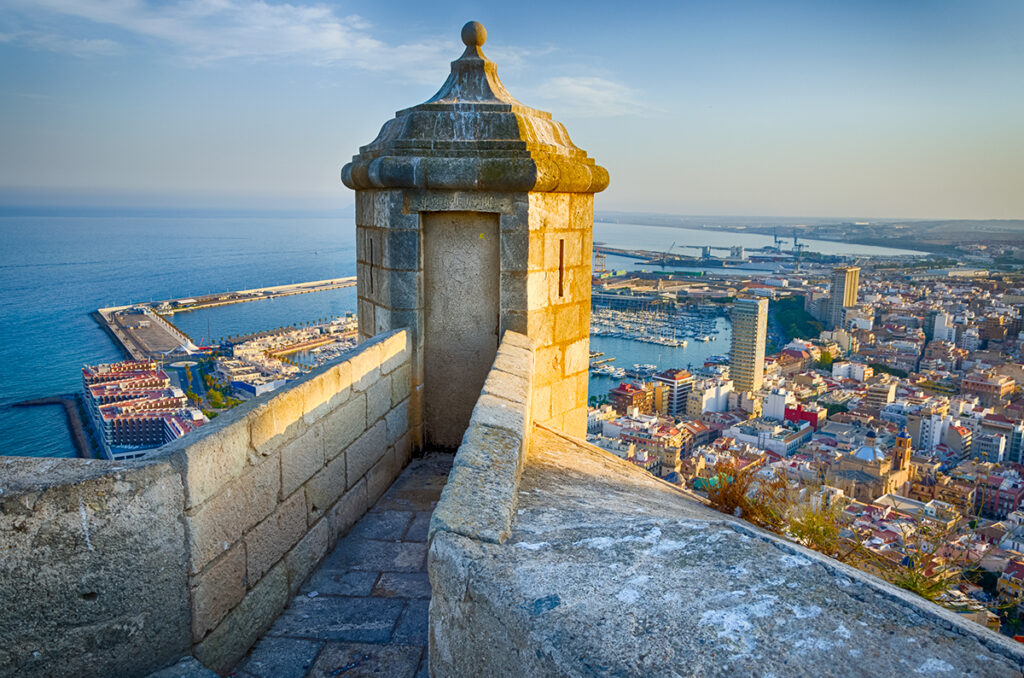
Aliante’s Santa Barbara Castle (El Castell de Santa Bàrbara) sits on the top of 166-meter-tall Mount Benacantil, overlooking the city. It is one of the largest medieval fortresses in Spain. The origins of the castle date to the 9th century at the time of Muslim occupation of the Iberian Peninsula.
The elevated location of the Castle of Santa Barbara gives the structure a strategic advantage – any enemy forces approaching on land or on the Mediterranean Sea would be spotted long before they could approach for an attack.
When it did come to the attack, the mountaintop location and formidable defence walls made the castle virtually unassailable.
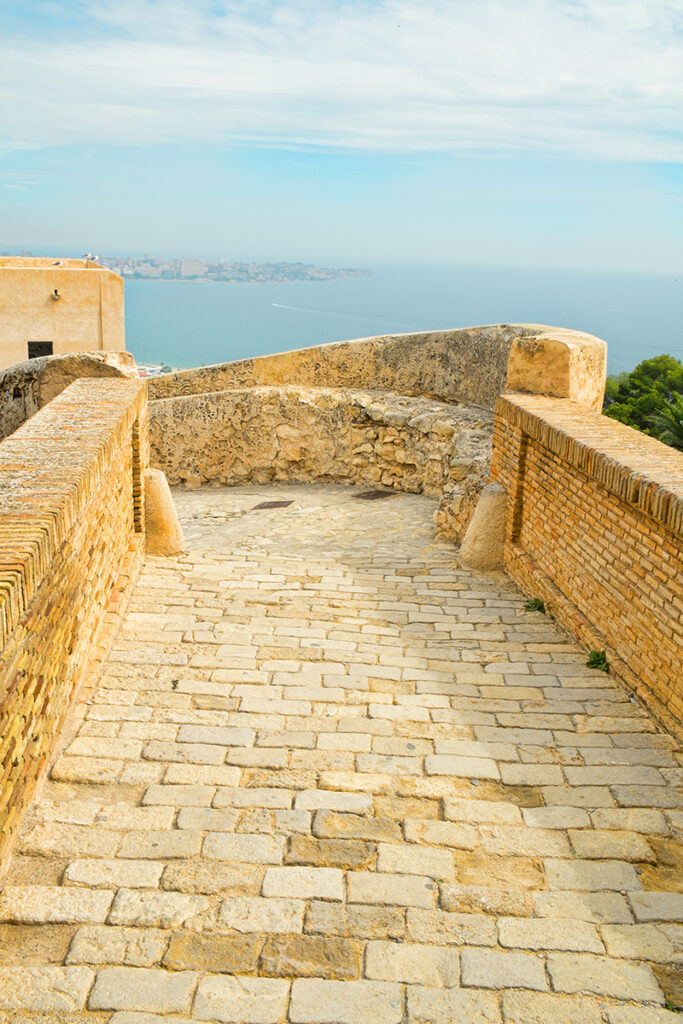
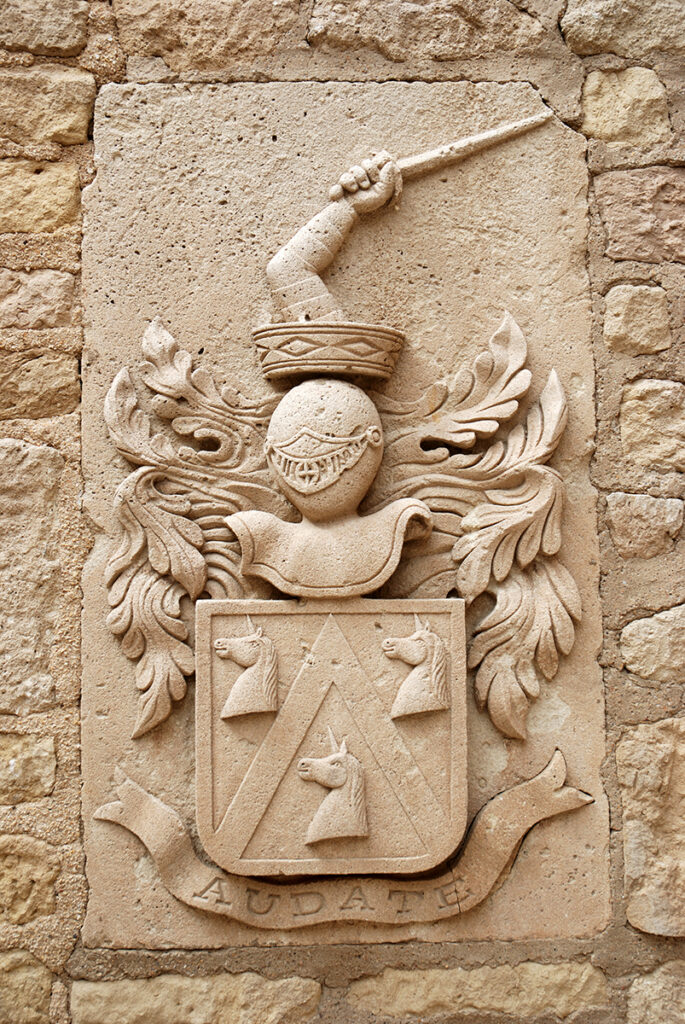
Yet in 1248, Alfonso of Castile managed to capture the castle from the Moors. This is how the castle acquired its name – the day it was finally captured was the Santa Barbara feast day.
Today, the spatial castle grounds are divided into three main areas: the Torreta, which contains the former Keep; the intermediate area with the most important buildings, including the reception Hall of Philip II; and the lower area, added in the 18th century.
There is quite a bit to see at Santa Barbara Castle. There are the dungeons where prisoners were kept and tortured; the arched underground cisterns used in the Middle Ages to collect rainwater, and the most iconic area of the castle – Macho del Castel watch tower that juts out from the wall of the castle, hovering above the city of Alicante. From this watch tower, you are treated to a 360-degree panorama of the coast and the city.
And the best news is – you don’t have to climb to the top of the mountain – there is an elevator that will take you from the beach straight to the castle. This means that you can explore the gorgeous barrio Santa Cruz walking downhill.
Barrio de San Roque
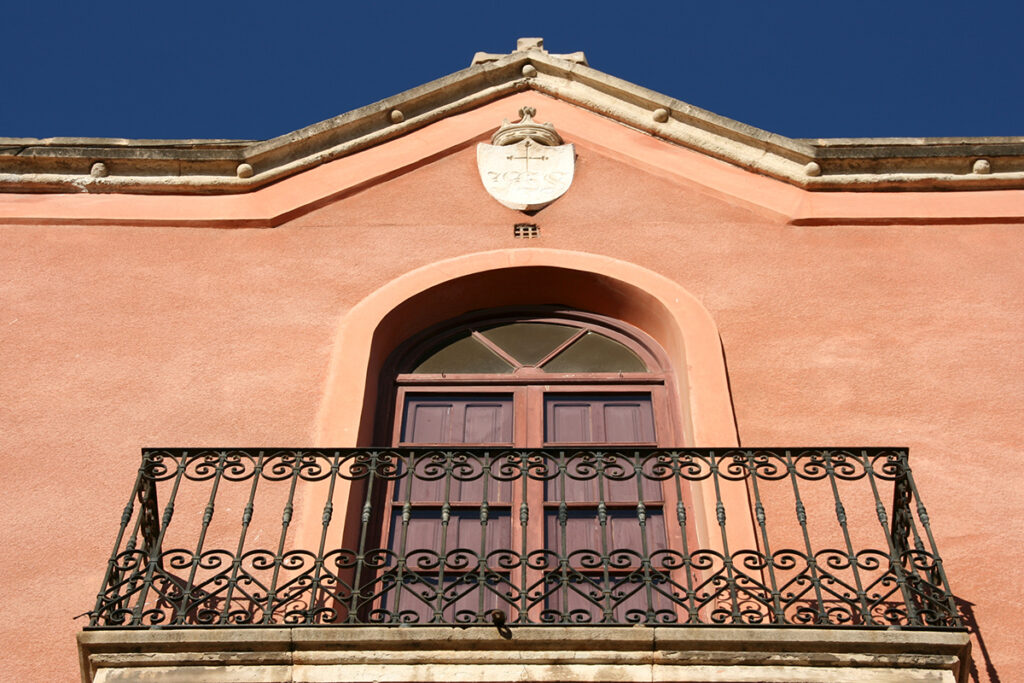
Next door to Santa Crus, barrio San Roque is also part of Alicante old town. It is a more modest neighbourhood, historically home to working-class families. From the 17th to the 19th centuries, the barrio was settled mostly by sailors, fishermen and day labourers. But in the last two centuries, the neighbourhood was abandoned and fell into disarray.
It wasn’t until the 1990s that the barrio was revived and transformed into the charming neighbourhood you see today.
San Roque is home to Aliante’s oldest chapel – La Ermita de San Roque which dates back to the 16th century. The walls of many houses in this part of town are decorated with paintings and ornate tiles in an old Valencian tradition.
Before the house numbering convention came into place, houses were identified by their distinguishing features. It is the same tradition as you see on Nerudova Street in Prague, where each house has its own sign instead of a number.
Below Santa Cruz
While the barrios of Santa Cruz and San Roque were the residential areas of the Moorish Alicante Old Town, the business part of town was located along the coastline, at the foot of Mount Benacantil.
This part of town was all but demolished by a bombardment from the French armada in 1691 that lasted seven days. Most buildings in this part of town had been rebuilt in the later centuries, on the foundations of older structures.
Alicante Town Hall
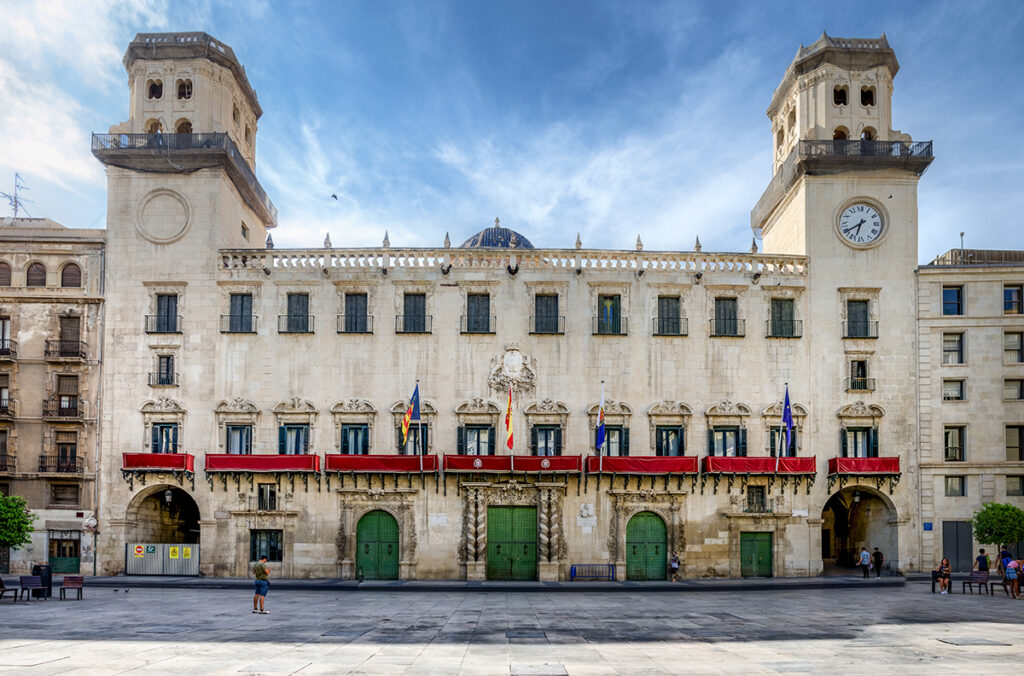
The original building of Alicante Town Hall was built when Alicante was granted the title of a city in 1490. Standing close to the coastline, the Town Hall was completely destroyed by the bombardment of 1691. It took a couple of decades to rebuild the Town Hall and the building you see today dates to the beginning of the 18th Century.
Concatedral de San Nicolas
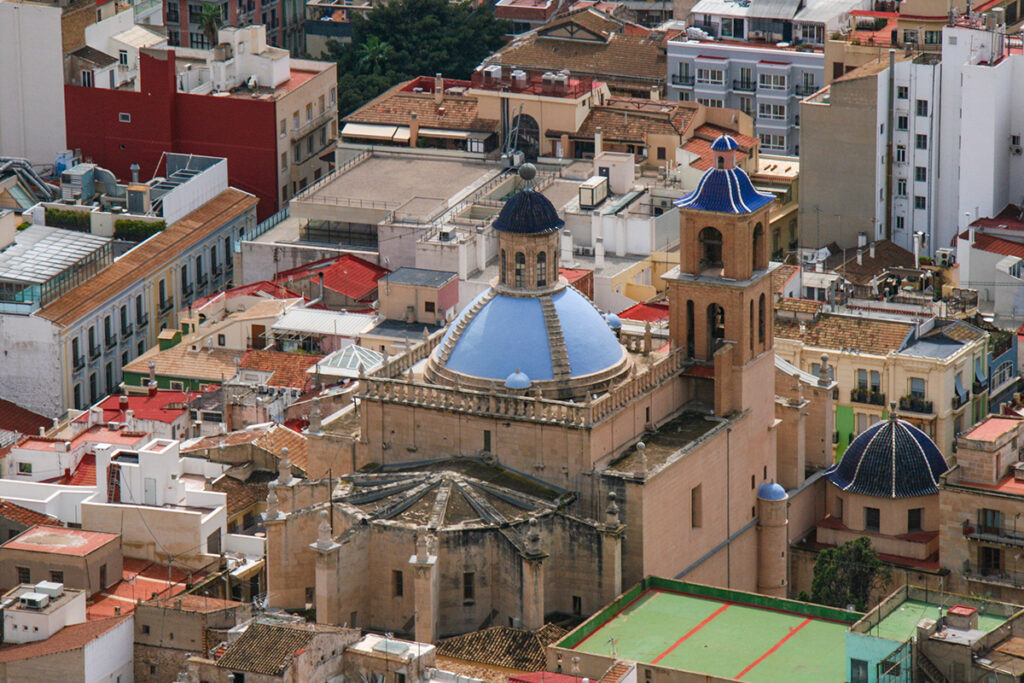
One of the few buildings in Alicante to survive the French bombardment, the Co-Cathedral (meaning that it shared the title of the Bishop’s seat with another cathedral), was constructed on the site of an earlier mosque.
The oldest part of the cathedral is the cloister which dates back to the 15th century, while the main church was built between 1613 and 1662. The main building is topped by a beautiful pale blue dome and its towers are adorned with ornate dark blue roofs.
Basilica de Santa Maria de Alicante
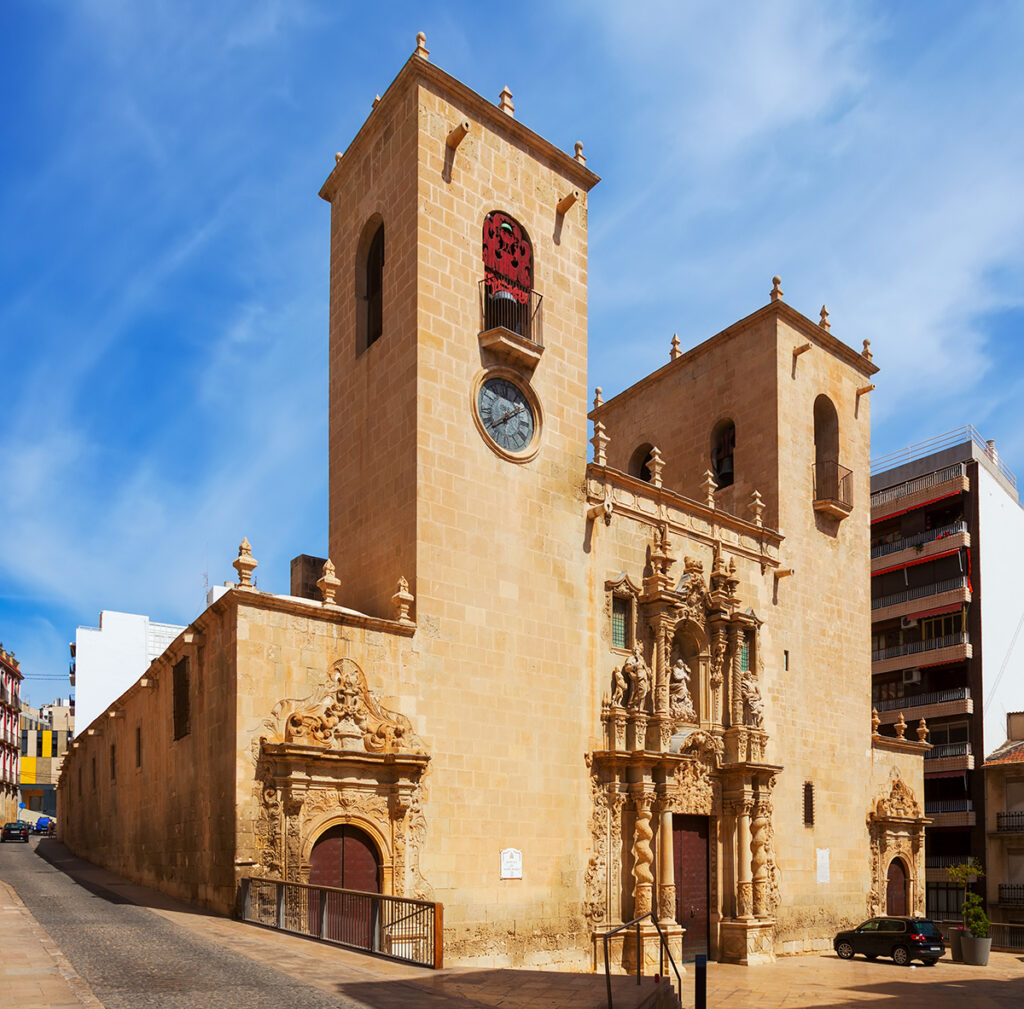
The Basilica of Saint Mary of Alicante is the oldest functioning church in Alicante. Like the cathedral, it was built over an old mosque when the town was reconquered by the Christians in 1246.
This church was built on the medieval city wall that surrounded the Old Town of Alicante. Walk down the stairs to the lower part of the building and you’ll see the traces of canon fire on the wall.
More on Exploring Spain
- 10 Ideas for Planning an Amazing Southern Spain Road Trip
- 26 Things to Do in Cordoba: Guide to Planning Cordoba itinerary
- Roman Cordoba Self-Guided Walk
- Guide to Visiting Cordoba Mezquita, When to Visit and What to See
- Discover Moorish Cordoba in 16 Monuments
- 15 Picturesque Walled Cities in Spain – Beyond Game of Thrones
- 16 Best Things to Do in Avila – Spain’s Amazing Medieval Walled Town
- 17 Fabulous Weekend Breaks in Spain: Must-See Destinations and Hidden Gems
- Sacromonte Caves: The Best-Kept Secret in Granada
- Discover Moorish Granada in One Day on This Self-Guided Walk

